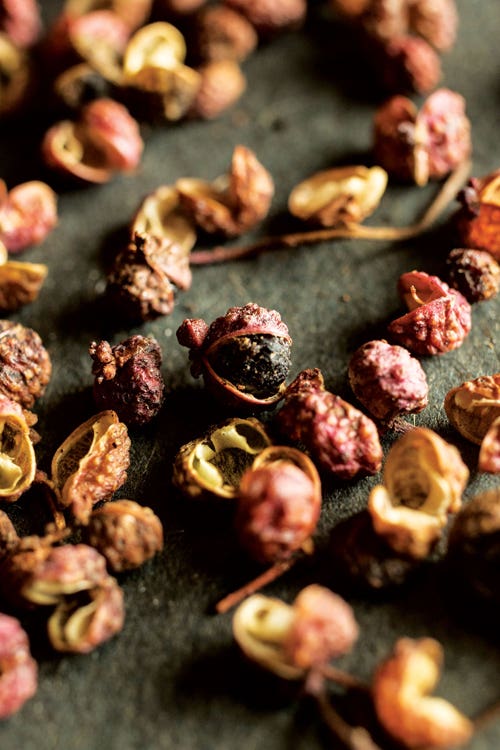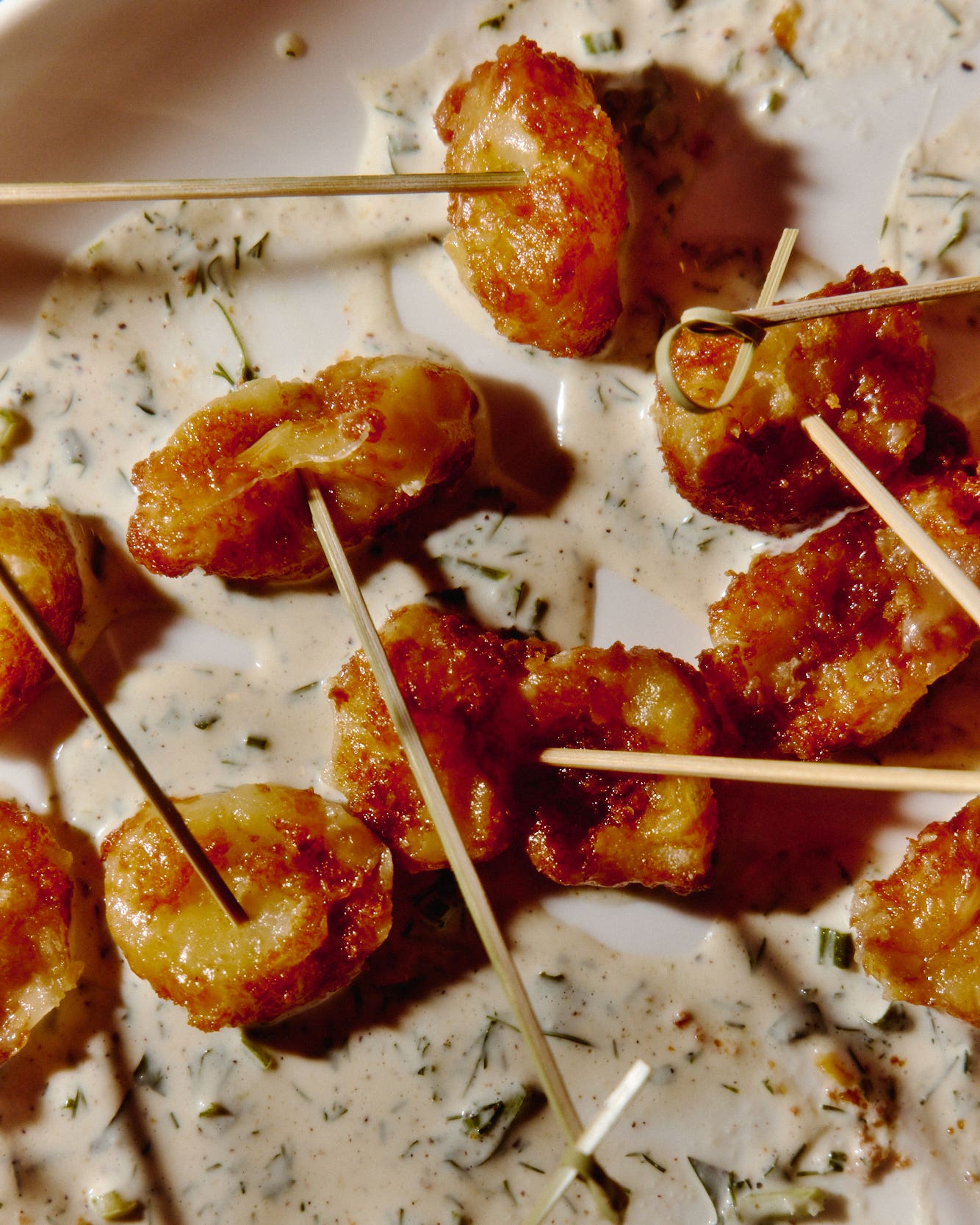
Little Balls of Fire
Sichuan peppercorns, responsible for ma, the buzzing, tingling sensation that is one of Sichuan cuisine's most distinctive characteristics, are not related to pepper at all but consist of the dried rinds of tiny fruits from a small thorny tree in the citrus family known as prickly ash. The spice's pins-and-needles effect—a phenomenon that scientists refer to as paresthesia—comes from compounds known as sanshools, which suffuse the dusky pink rinds. Sanshools are similar in structure to other pungent compounds (most notably piperine in black pepper and capsaicin in chiles) but behave very differently. "Sanshools chemically activate nerves that are usually only triggered mechanically, by physical touch and cold temperatures," says Bruce Bryant, a senior research associate at Monell Chemical Senses Center in Philadelphia. "Your brain interprets that as a tactile sensation that feels like the tingling when you're coming back from local anesthesia." But the peppercorns, when consumed in measured amounts, don't really numb the palate; in actuality, that tingling feeling increases our sensitivity to other tastes and flavors. And because sanshools and the capsaicin in chiles act on different systems of nerves, the two sensations—peppercorn tingling and chile spiciness—can be experienced in tandem, creating Sichuan's signature ma la combination. Cooks in Chengdu take full advantage of this, using the Sichuan peppercorns in combination with hot chiles to creates dishes of hair-curling heat and vividness.
Keep Reading
Continue to Next Story










